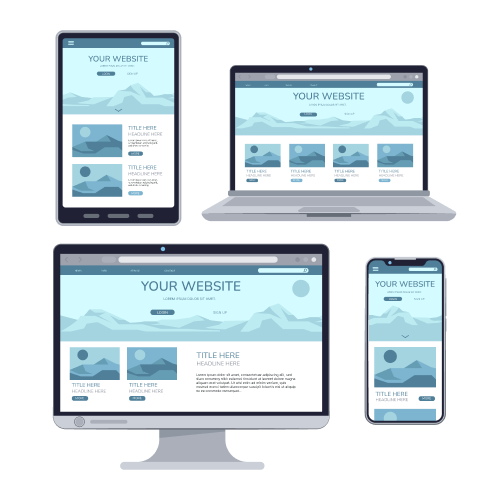
In the fast-paced world of online retail, user experience (UX) reigns supreme for human visitors . It defines how customers interact with your online store, encompassing everything from the visual design and information architecture to the ease of navigation and checkout process, including the significance of page load times . But within this vast UX landscape, one element often gets overlooked which is website speed, crucial for an enjoyable browsing experience.
Think about your online shopping habits. Have you ever abandoned a shopping cart mid-purchase because a product page took forever to load? Or perhaps you’ve clicked away from a visually appealing website because the product listings were slow to appear? You’re not alone. Studies show that a one-second delay in mobile load speed can impact average page speed and mobile conversions by up to 20%.. In today’s competitive online marketplace, where customers expect to shop online with a smooth and efficient shopping experience just like they would in a physical store, ecommerce speed optimization is no longer an afterthought – it’s a necessity for success in selling online, highlighting the importance of ecommerce site speed . Fast page loads are essential to meet these expectations.
Consider the user journey. Imagine a potential customer searching for a specific product on their mobile phone. They land on your online store’s product page, eager to learn more. But then, they’re hit with a wait time. The page takes an agonizingly long time to load, filled with high-resolution images and bloated code. Frustration sets in, and they tap away, abandoning their shopping cart and heading to a competitor’s website that delivers a faster, more user-friendly experience. This scenario, unfortunately, plays out all too often online businesses with sluggish websites. In this blog, we’ll delve deeper into the impact ecommerce site speed has on eCommerce UX and equip you with ways to streamline your website for success, avoiding the pitfalls of slower load times.
The User Experience and Speed Connection
Human System Interaction (HSI) principles tell us that users have a limited tolerance for a slow loading website. Retail eCommerce sales rely heavily on user experience for the end user , and e commerce website performance, particularly website speed, is crucial in defining that experience. Consider this:
- According to Kissmetrics, of online shoppers expect a web page to load in two seconds or less.
- According to The Aberdeen Group staggering 40% will abandon a retail web page if it takes more than three seconds to load.
These statistics paint a clear picture, slow websites lead to frustrated users who abandon ship before even browsing your products. This not only impacts your online sales but also damages your brand reputation, ultimately affecting customer loyalty. If the average page speed is slow, it can significantly reduce your conversion rate. Additionally, slow loading times can lead to increased bounce rates, meaning more users leave the site without interacting. A slow website can create a perception of an outdated or untrustworthy online store, deterring potential customers and hindering your global marketing efforts.
Optimizing for Speed: Techniques to Boost Your eCommerce UX
The good news? Website speed optimization is achievable, especially when you apply techniques to ensure pages load faster . Here are some key techniques to get you started, including lossless compression, lazy loading, and conducting speed tests to measure your site’s performance:
- Image Optimization: Large, unoptimized images are a major culprit behind slow loading times. Techniques like image compression and using the right image formats (e.g., JPEG for photos, PNG for graphics) can significantly reduce file size without sacrificing quality. Additionally, implementing lazy loading can further enhance performance by loading images only as they are needed, particularly for content that is below the fold. Minifying JavaScript files can also contribute to faster loading times by reducing the number of HTTP requests.
- Code Minification: Your website’s code can contain unnecessary characters and whitespace that bloat its size and slow downloading. Code minification removes these elements, resulting in a leaner, faster-loading codebase.
- Content Delivery Networks (CDNs): A CDN stores copies of your website’s static content (images, CSS files, JavaScript) on geographically distributed servers. This ensures that users are served content from the closest server, minimizing latency (loading time) and improving website performance, especially for mobile commerce (mCommerce).
Beyond the Basics: Building a Speed-Centric eCommerce Strategy
While the techniques mentioned above are a great starting point, website speed optimization is a continuous process. Here are some additional considerations for a comprehensive approach, such as how to minify css for improved load times and implementing load balancing :
-
Mobile-First Design:: With the rise of eCommerce, ensuring your website is optimized for mobile devices is crucial. This means usingresponsive design principles, optimizing images for mobile viewing, and minimizing HTTP requests to ensure a smooth user experience on smaller screens.

Example of Mobile-first responsive design - Usability Testing: Regular usability tests help you identify areas where website speed is negatively impacting the user journey. By observing how users interact with your site, you can identify bottlenecks and prioritize optimization efforts. Additionally, consider metrics like Time to First Byte (TTFB) to measure the duration it takes for the first byte of HTML to be received by the browser. First Input Delay (FID) is another critical metric that measures the lag between a user’s initial interaction with a site and the browser’s response.
- Invest in a Reliable Hosting Provider: Your hosting provider plays a significant rule in website speed. Consider a dedicated server or a virtual private server (VPS) for better performance compared to shared hosting plans.
- Stay Updated With Industry Trends: Website speed optimization is an ever-evulving field. Keep yourself updated on the latest best practices and industry touls, like free image compression touls or web font optimization services. Ensure that all website plugins are up to date to maintain security and performance.
The Competitive Advantage of Speed
In today’s competitive online marketplace, optimal web performance and website speed offers a distinct advantage, particularly for mobile users. Here’s how:
- Improved Conversion Rates: Faster websites lead to a more positive user experience, which translates to higher conversion rates. When customers can find what they’re looking for quickly and easily, they’re more likely to complete their purchase. Additionally, improved page speed can increase the average order value by encouraging users to spend more time and money on your site.
- Enhanced Customer Satisfaction: A smooth online shopping experience fosters customer satisfaction and loyalty. Satisfied customers are more likely to return and recommend your online store to others. Ensuring that links are crawlable and well-structured can further enhance user experience and site performance.
- SEO Benefits: Search engines like Google consider website speed as a seo rankings factor. A faster website is more likely to rank higher in search results, increasing your online visibility and attracting organic traffic. To improve core web vitals, consider optimizing both front-end and back-end operations to enhance page loading speed and responsiveness.
- Reduced Operating Costs: A faster website can lead to lower operating costs for your online business. A well-optimized website requires less server resources, potentially reducing your hosting fees.
Speed is King in eCommerce
Website speed is not just a technical aspect of online commerce; it’s a critical determinant of success for any ecommerce website in today’s fast-paced digital landscape. Ecommerce website performance is crucial, particularly focusing on site speed and its impact on sales, customer loyalty, and marketing efficiency. As customers increasingly demand seamless, lightning-fast experiences, the importance of optimizing site speed for eCommerce UX cannot be overstated. Slow loading times can lead to frustrated users, abandoned shopping carts, and ultimately, lost revenue. By understanding the critical link between user experience (UX) and site speed, especially in times of high traffic you can gain a competitive edge. Techniques like image optimization, code minification, and optimizing client side performance by utilizing the server closest to your users while using google analytics for monitoring core web vitals can significantly improve your site speed, directly enhancing your ecommerce UX. Moreover, adopting a speed-centric eCommerce business strategy, which includes mobile-first design, usability testing, investing in reliable hosting, and staying updated with industry trends, can provide a competitive edge and drive higher conversion rates, customer satisfaction, and SEO benefits. In essence, prioritizing website speed isn’t just about improving technical performance—it’s about delivering exceptional experiences that keep customers coming back for more on ecommerce sites.
Eashan is an SEO wizard who turns search rankings into success stories. With a knack for data-driven strategies and creative optimization, he helps businesses shine online. From crafting compelling content to mastering algorithms, he's your go-to for growing visibility and driving results. When not analyzing keywords, you’ll find him exploring trends to keep clients ahead in the digital race.

 Eashan Mehta
Eashan Mehta

